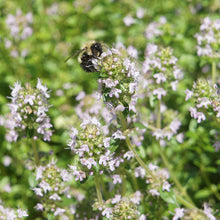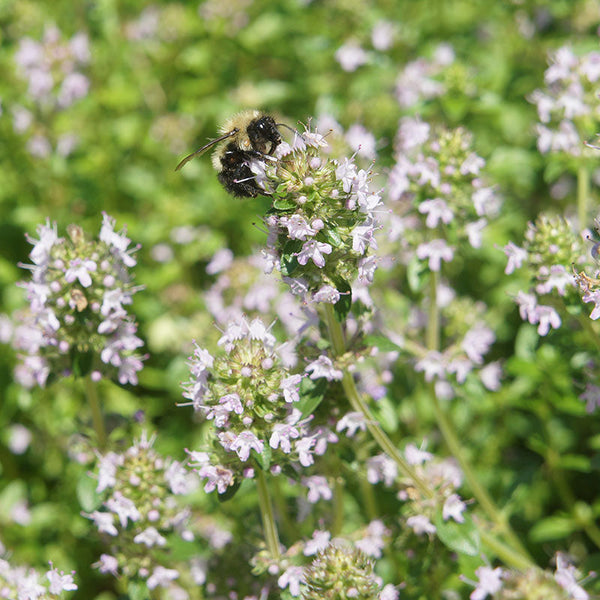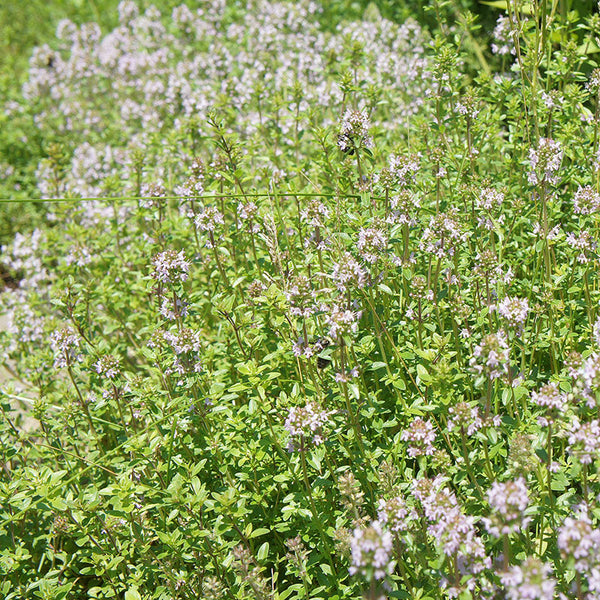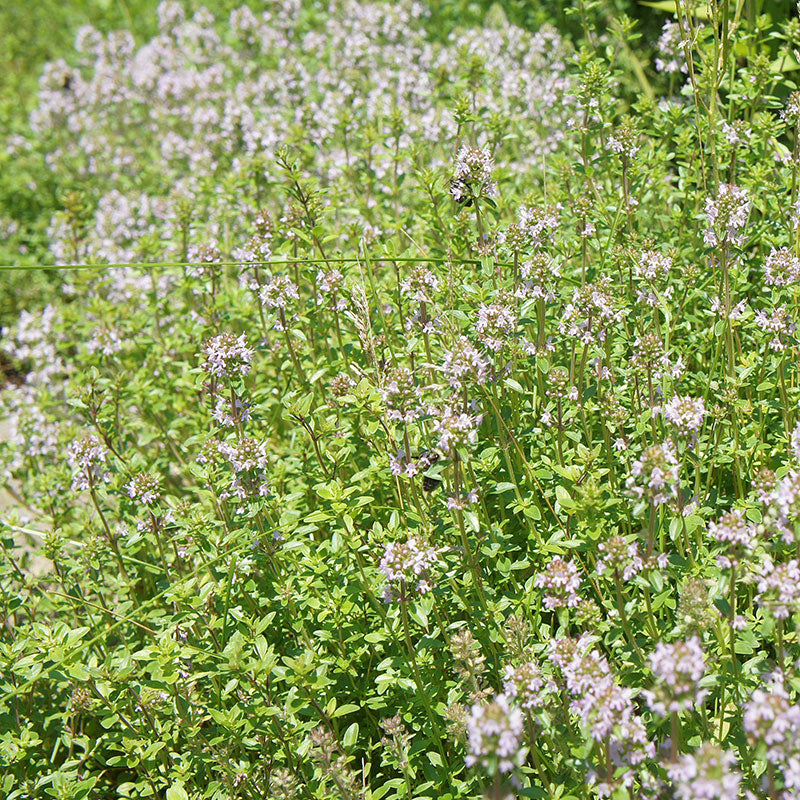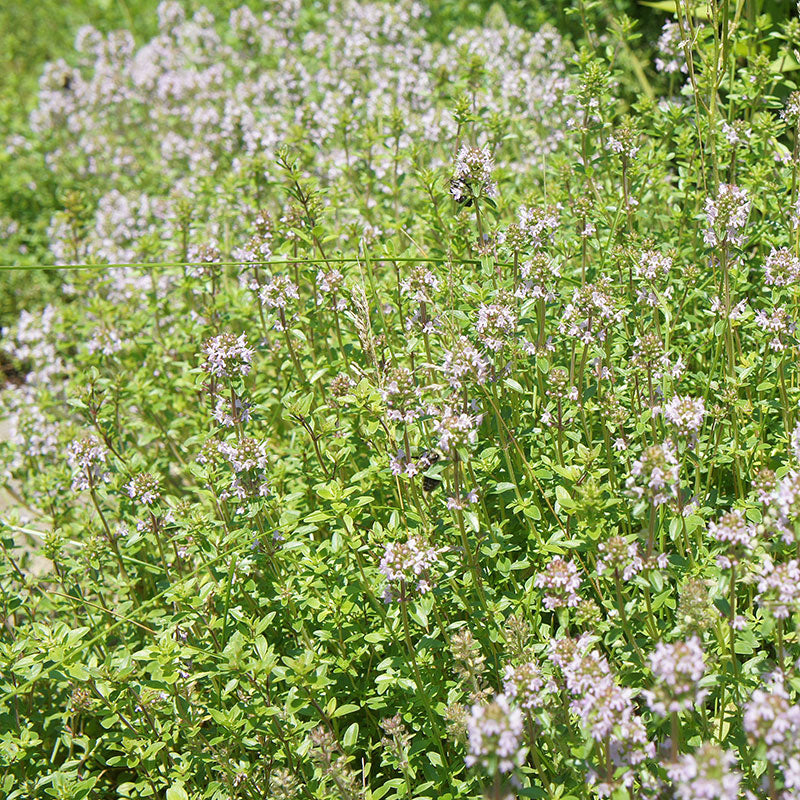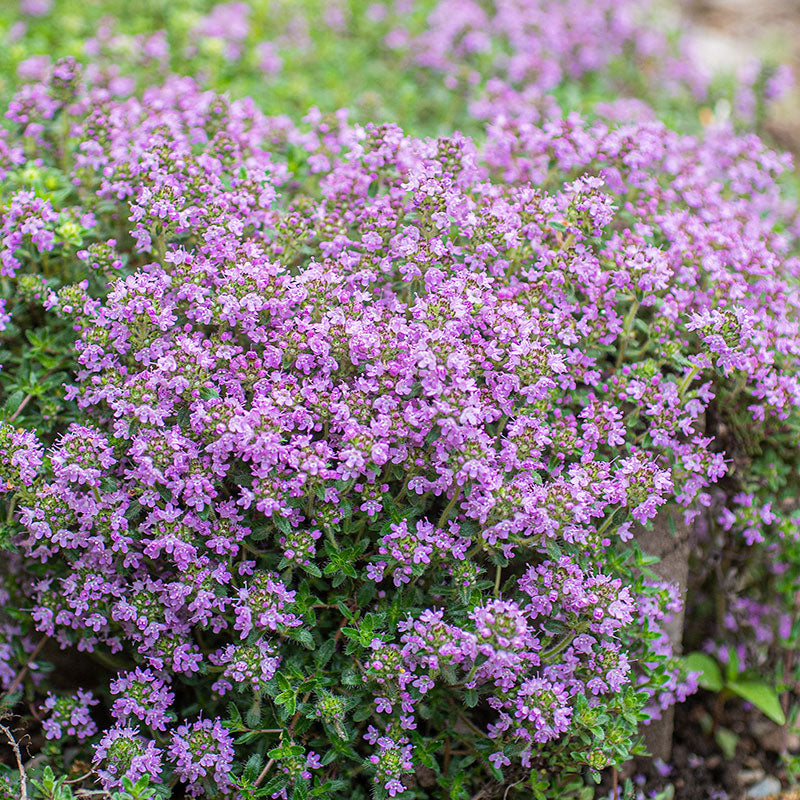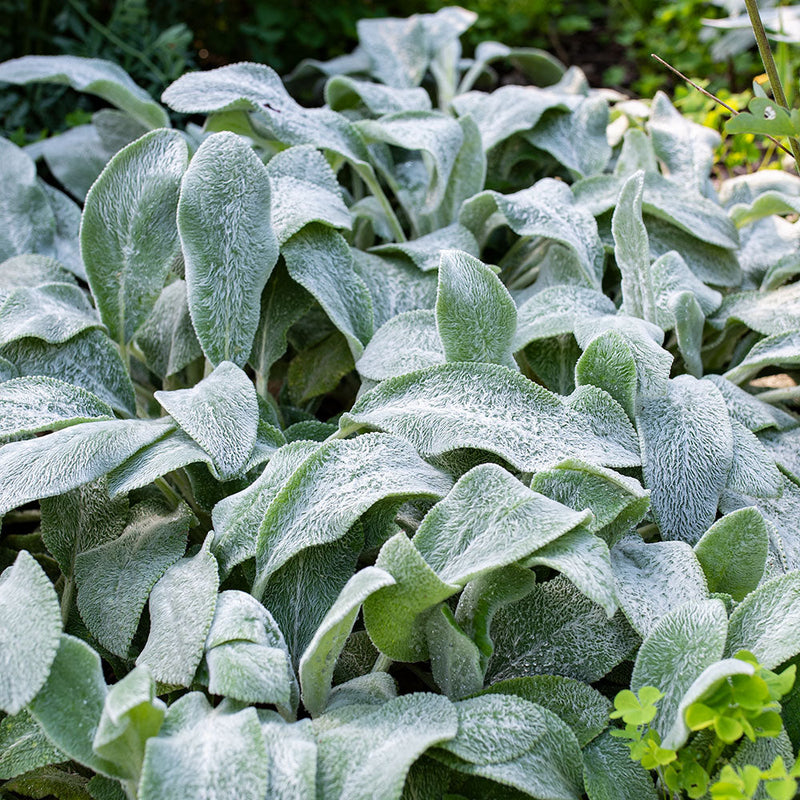Seed Packet
Creeping Thyme
Thymus serpyllum
One of my favorite herbs, creeping thyme spreads quickly, filling clay containers and cascading over their edges, spilling over dry rock walls, and colonizing stepping stones with fragrant foliage and lavender-pink blooms. Combined with other thymes and low creepers, it creates an oriental carpet of color and scent. Use in potpourri and the kitchen.
SKU #S122
Growing Companions






























